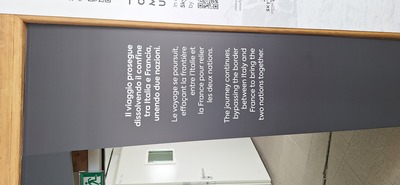How to not ride Telepherique Panoramic Mont Blanc
It’s been a while since I blogged. Partly because my work has become more private so that I cannot write too much about it, and partly because other bloggable things in my life simply didn’t happen.
In August 2024, I spent a week on vacation in Switzerland.
The boring way to travel from Chamonix in Haute-Savoie, France to the Valley d’Aosta (in German: Aostatal), Italy, is to take a car or a bus and go through the Mont Blanc Tunnel. It’s about a 30 minute trip that way, with 12 minutes in the dark.
Young and sporty people can hike over the mountains. It’s easy, just 3000 meters. Height meters. But I cannot tell you exactly, Google Maps insists that you hike west of the Mont Blanc, which is 100 km and a 30 hour hike. That’s very obviously wrong.
Or you can take the route for the crazy: With in total five cableways over the Aiguille du Midi and Pointe Helbronner (named after the french topographer, alpinist and geodesist Paul Helbronner, who pioneered cartography of the French Alps) to Entreves, which in turn is a neighborhood of Courmayeur. The ride from Aiguille du Midi to Pointe Helbronner is one of the most spectacular ropeways in Europe. You’re crossing the border between France and Italy either in the middle of the tunnel or on the summit of the mountain Pointe Helbronner.
 There is surprisingly little current information about this trip on the Interweb, and this is also a reason for me writing this in English to make the information available to a broader audience. Sorry for some of the links being in German. A lot of the information found on the Web is outdated, especially the one about tariffs. It is hard to obtain current information if you don’t speak French AND Italian. And, frankly, I got the impression that the French and the Italian don’t cooperate well here, despite a sign on Pointe Helbronner claiming that „The journey continues, bypassing the border (…) to bring the two nations together“, and Chamonix and Courmayeur having a relationship as „Sister City“.
There is surprisingly little current information about this trip on the Interweb, and this is also a reason for me writing this in English to make the information available to a broader audience. Sorry for some of the links being in German. A lot of the information found on the Web is outdated, especially the one about tariffs. It is hard to obtain current information if you don’t speak French AND Italian. And, frankly, I got the impression that the French and the Italian don’t cooperate well here, despite a sign on Pointe Helbronner claiming that „The journey continues, bypassing the border (…) to bring the two nations together“, and Chamonix and Courmayeur having a relationship as „Sister City“.
You can continue reading after the click
Continue reading "How to not ride Telepherique Panoramic Mont Blanc"